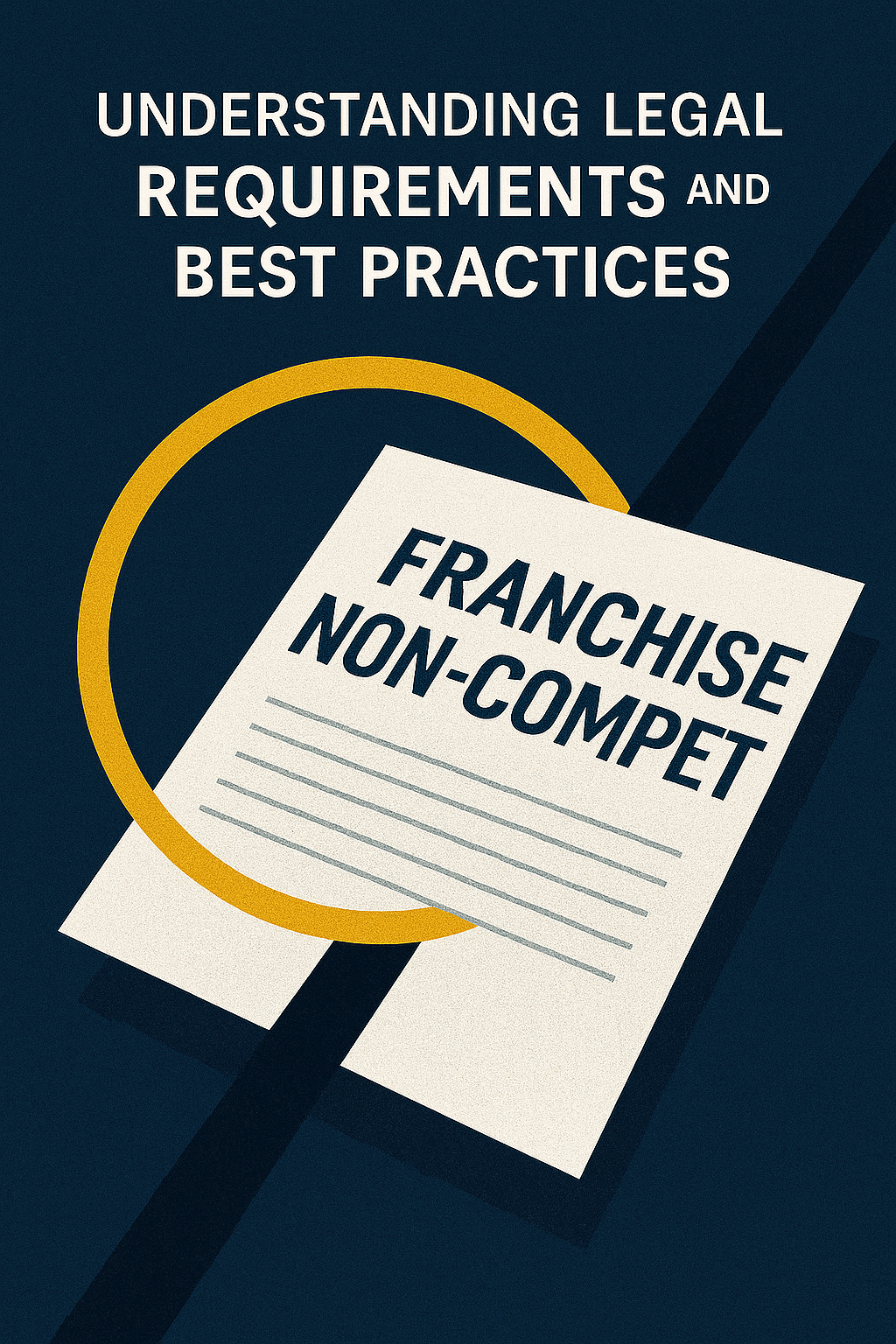In the world of franchising, competition between nearby franchisees is a common challenge that franchisors must address. The presence of multiple franchise locations in close proximity can lead to customer overlap, potential territorial disputes, and strained relationships among franchisees. Understanding the impact of nearby franchisee competition on the franchisor is crucial in successfully managing and navigating these challenges.
Understanding the Impact of Nearby Franchisee Competition on the Franchisor
When nearby franchise locations compete against each other, it can create a variety of effects on the franchisor. On one hand, increased competition can drive franchisees to be more innovative and customer-focused, ultimately leading to improved overall performance. On the other hand, excessive competition can lead to a dilution of the brand and customer confusion. Therefore, franchisors need to strike a delicate balance between encouraging healthy competition while maintaining the integrity of the brand.
One potential positive effect of nearby franchisee competition on the franchisor is the opportunity for market expansion. When franchise locations compete with each other, it can lead to increased brand visibility and awareness in the local market. This can attract more customers and potentially drive up sales for the franchisor as a whole.
Additionally, nearby franchisee competition can also provide valuable insights and feedback for the franchisor. As franchisees compete against each other, they may experiment with different strategies and tactics to attract customers. The franchisor can observe and learn from these experiments, gaining valuable knowledge about what works and what doesn’t in the local market. This information can then be used to improve the overall franchise system and support all franchisees in achieving success.
The Importance of Effective Franchisee Management in Competitive Markets
In competitive markets, effective franchisee management becomes particularly crucial. Franchisors must ensure that their franchisees have the necessary support, resources, and training to navigate and thrive in competitive environments. Clear and open lines of communication between the franchisor and franchisees are vital for addressing challenges and promoting cooperation among nearby franchisees.
Furthermore, effective franchisee management also plays a significant role in maintaining brand consistency and customer satisfaction. Franchisors need to establish and enforce standardized operating procedures and quality control measures to ensure that all franchisees deliver a consistent experience to customers. This consistency not only helps build a strong brand reputation but also fosters customer loyalty and trust.
Strategies for Minimizing Conflict and Promoting Cooperation Among Nearby Franchisees
To minimize conflict and foster cooperation among nearby franchisees, franchisors can implement various strategies. One effective approach is to establish regular meetings or conferences where franchisees can share experiences, exchange ideas, and learn from one another. This encourages collaboration rather than cutthroat competition. Additionally, implementing a system for revenue-sharing among nearby franchisees can promote a sense of unity and shared success.
Another strategy that can be employed is the creation of a mentorship program. This program pairs experienced franchisees with new or struggling franchisees, allowing them to benefit from the knowledge and guidance of their more successful counterparts. This not only helps to minimize conflict by providing support and assistance to struggling franchisees, but also promotes cooperation as franchisees work together towards mutual success.
In addition, franchisors can facilitate communication and collaboration among nearby franchisees by creating an online platform or forum where they can connect and interact. This platform can serve as a space for franchisees to ask questions, share best practices, and seek advice from their peers. By providing a centralized hub for communication, franchisors can foster a sense of community and cooperation among nearby franchisees, reducing the likelihood of conflicts arising.
Balancing Market Share: How Franchisors Navigate Competition Between Nearby Locations
Franchisors face the ongoing challenge of balancing market share between nearby franchise locations. It is essential to analyze market dynamics, customer preferences, and demographics to allocate resources and marketing efforts effectively. Franchisors can strategically assign territories to franchisees, ensuring each location has a sufficient customer base while avoiding excessive competition.
One strategy that franchisors employ to balance market share is implementing a cooperative advertising program. By pooling resources from multiple nearby locations, franchisors can create impactful marketing campaigns that reach a wider audience. This approach not only maximizes the effectiveness of advertising efforts but also fosters collaboration and synergy among franchisees.
In addition to cooperative advertising, franchisors also utilize data analytics to gain insights into consumer behavior and market trends. By analyzing sales data, customer feedback, and market research, franchisors can identify opportunities for growth and make informed decisions about resource allocation. This data-driven approach allows franchisors to adapt their strategies and offerings to meet the evolving needs and preferences of their target market.
Creating a Collaborative Environment: Encouraging Communication Among Nearby Franchisees
Franchisors play a pivotal role in creating a collaborative environment among nearby franchisees. They can facilitate regular communication channels, such as online forums or dedicated collaboration platforms, where franchisees can discuss common challenges, share best practices, and support one another. By fostering a culture of cooperation, franchisors can help mitigate the negative impacts of nearby competition.
One effective way for franchisors to encourage communication among nearby franchisees is by organizing regular regional meetings or conferences. These events provide an opportunity for franchisees to come together in person, network, and exchange ideas. By facilitating face-to-face interactions, franchisors can strengthen the sense of community and encourage collaboration among franchisees.
In addition to formal communication channels, franchisors can also promote informal interactions among franchisees. This can be done through social events, such as team-building activities or networking dinners. By creating a relaxed and friendly atmosphere, franchisors can foster relationships among franchisees, which can lead to increased communication and collaboration.
Leveraging Technology to Mitigate Competition Between Nearby Franchisees
In the digital age, technology plays a crucial role in mitigating competition between nearby franchisees. Franchisors can leverage customer relationship management (CRM) software to track customer interactions, preferences, and purchasing behavior. This data can be used to customize marketing efforts and identify untapped customer segments. Additionally, technology can help optimize territory mapping, ensuring equitable distribution of customers among franchise locations.
Furthermore, technology can facilitate communication and collaboration between nearby franchisees. Franchisors can implement online platforms or mobile applications that allow franchisees to share best practices, exchange inventory, and coordinate promotions. This not only fosters a sense of community among franchisees but also enhances their collective ability to attract and retain customers.
The Role of Territory Mapping in Managing Competition Amongst Nearby Franchisees
Territory mapping is a vital tool in managing competition among nearby franchisees. Franchisors must carefully develop and map territories to prevent overlapping customer bases and avoid disputes among franchisees. By defining clear boundaries and assigning territories based on market potential and existing customer density, franchisors can minimize conflicts and foster healthy competition.
In addition to preventing conflicts and fostering healthy competition, territory mapping also allows franchisors to optimize resource allocation and maximize market coverage. By strategically assigning territories, franchisors can ensure that each franchisee has access to a sufficient customer base and can effectively serve their target market. This not only benefits the franchisees by providing them with a larger pool of potential customers, but it also benefits the franchisor by maximizing overall sales and profitability.
Ensuring Fairness and Equality: How Franchisors Implement Anti-Competitive Practices Policies
To ensure fairness and equality among nearby franchisees, franchisors often implement policies and guidelines to deter anti-competitive practices. These policies prohibit predatory pricing, unfair marketing tactics, or any behavior that may harm the reputation or profitability of other franchise locations. By establishing and enforcing such policies, franchisors uphold the integrity of the brand and promote a level playing field for all franchisees.
Furthermore, franchisors may also conduct regular audits and inspections to ensure compliance with these anti-competitive practices policies. These audits may include reviewing pricing strategies, advertising materials, and promotional activities of franchisees. By actively monitoring and addressing any potential violations, franchisors can maintain a fair and competitive environment within their franchise system.
Case Study: Successful Examples of Franchisors Handling Competition Between Nearby Franchisees
Examining successful case studies can provide valuable insights into how franchisors successfully handle competition between nearby franchisees. One notable example is a fast-food franchise that implemented a collaborative marketing campaign, featuring both nearby franchise locations. This strategy not only increased brand awareness but also demonstrated the benefits of cooperation among franchisees, leading to a substantial boost in overall sales.
Another successful case study involves a retail franchise that faced competition from a nearby franchisee. In response, the franchisor implemented a differentiated product offering, focusing on unique and exclusive merchandise that was not available at the nearby location. This strategy allowed the franchise to attract a distinct customer base and maintain a competitive edge in the market. By offering a specialized product selection, the franchisor effectively minimized direct competition and increased customer loyalty.
Identifying and Addressing Potential Conflict Points Between Nearby Franchisees
Proactively identifying and addressing potential conflict points is crucial for franchisors in managing competition between nearby franchisees. By conducting regular market analyses and assessing customer feedback, franchisors can identify areas of tension or overlap. Addressing these issues promptly, such as revising territories or facilitating communication, can help mitigate conflicts and promote harmonious coexistence.
One effective strategy for identifying potential conflict points is through the use of geographic information systems (GIS). GIS technology allows franchisors to map out the locations of their franchisees and analyze the proximity of each franchise to one another. By visualizing this data, franchisors can identify areas where franchise territories may overlap or where there may be a high concentration of franchisees in close proximity. This information can then be used to make informed decisions about territory boundaries and potential adjustments to minimize competition and conflict.
In addition to geographic analysis, franchisors can also implement regular communication channels and forums for franchisees to share their experiences and concerns. This can be done through regular meetings, online forums, or even dedicated communication platforms. By providing a space for franchisees to voice their opinions and concerns, franchisors can gain valuable insights into potential conflict points and work towards finding mutually beneficial solutions. Open and transparent communication can help foster a sense of collaboration and cooperation among franchisees, reducing the likelihood of conflicts arising.
The Role of Training and Support in Mitigating Competition Amongst Nearby Franchisees
Franchisors play an instrumental role in providing training and support to their franchisees, especially in competitive markets. By equipping franchisees with comprehensive training programs, ongoing support, and access to resources, franchisors empower their franchisees to compete effectively. This not only strengthens individual franchise locations but also fosters collaboration and shared success among nearby franchisees.
The Impact of Exclusive Territories on Managing Competition Between Nearby Franchisees
Franchisors often assign exclusive territories to their franchisees, granting them a specific geographic area to operate within. This practice can help manage competition between nearby franchisees by ensuring each location has a dedicated customer base. Exclusive territories foster a sense of ownership and control, reducing the potential for conflicts or customer cannibalization.
Building a Strong Brand Presence to Stand Out in Competitively Dense Areas
In competitively dense areas, building a strong brand presence becomes essential for franchisors. Establishing a well-known and respected brand helps franchise locations stand out among the competition. Franchisors can invest in targeted marketing campaigns, community involvement, and exceptional customer service to create a distinctive and memorable brand identity.
Embracing Cooperation over Cutthroat Competition: Best Practices for the Franchisor
In conclusion, competition between nearby franchisees presents both challenges and opportunities for franchisors. By embracing cooperation, encouraging open communication, implementing effective policies, leveraging technology, and prioritizing training and support, franchisors can successfully navigate and mitigate competition among their franchisees. Ultimately, striking a balance between healthy competition and collaboration allows both the franchisor and franchisees to thrive in competitive markets.







